This topic takes on average 55 minutes to read.
There are a number of interactive features in this resource:
 Biology
Biology
 PSHE / Citizenship studies
PSHE / Citizenship studies
 Science (applied)
Science (applied)
Most of the developments in biotechnology have taken place in a very short space of time, beginning with the revelation of the structure of the DNA molecule 50 years ago. To see just how rapidly DNA technology has developed, take a look at the Biotechnology Timeline below.
1900 Hugo Marie De Vries, Karl Franz Joseph Correns and Erich Tschermak von Seysenegg rediscovered Gregor Mendel’s work on genetics, which had been ignored for 40 years. They had each rediscovered his laws for themselves, searched the literature and when they found Mendel’s work they each, in a very unselfish gesture, gave Mendel the credit.
1902 Walter Sutton states that chromosomes are paired and may be the carriers of heredity.
1905 Clarence McClung shows that female mammals have two X chromosomes and males have an X and a Y.
1906 The term ‘genetics’ is introduced.
1907 Thomas Hurst Morgan started working on Drosphila (fruit flies) to prove that chromosomes have a role in heredity and to confirm mutation theory. This work led to a much deeper understanding of the mechanisms of heredity.
1909 The terms gene, genotype and phenotype were used for the first time.
1911 The first chromosome maps are developed.
1926 Hermann Muller discovers that X-rays cause genetic mutation through his work with fruit flies.
1941 George Beadle and Edward Tatum developed the idea that each gene controls the development of one enzyme.
1944 Oswald Avery, Colin MacLeod and Maclyn McCarty show that DNA is the hereditary material for most living organisms.
1950 The first embryo transplants for cattle are performed.
1951 A calf is produced using semen that had been frozen before it was used.
James Watson from the USA and Francis Crick of England develop the double helix model of DNA which explains the way in which this massive molecule can carry and transmit the hereditary information in living organisms.
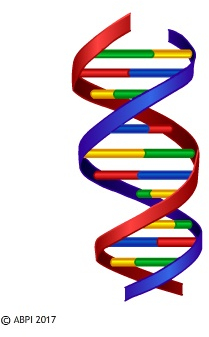
The DNA double helix – one of the most easily recognised molecules in the world
1970 Werner Arber, a Swiss scientist, made a discovery which has had far reaching effects for genetic engineering. He found that bacteria defend themselves against viruses by cutting the virus DNA using special restriction enzymes. These enzymes are now widely used in the new DNA technologies.
First gene synthesised.
1971 Daniel Nathans and Hamilton Smith develop enzymes which break DNA at specific sites – another step towards genetic engineering.
1973 A calf is produced from a frozen embryo for the first time.
Stanley Cohen and Herbert Boyer show that DNA molecules can be cut with one type of enzyme, joined together again with another type and reproduced by inserting them into the bacteria E. coli. This was the beginning of the science of genetic engineering.
1974 Some scientists call for a halt in the development of genetic engineering until the implications of what it might lead to are better understood.
1977 The genome of a single stranded RNA bacteriophage MS2 (a virus which attacks bacteria) is sequenced by Walter Fiers and his team in Belgium and the genome of a single stranded DNA bacteriophage Phi X 174 is sequenced by Frederick Sanger and his team in Cambridge, UK.
1978 Louise Brown, the first ‘test-tube baby’ is born. She was the result of in vitro fertilisation, where her parents’ gametes joined outside of the mother’s body and the developing embryo was then returned to the uterus to develop normally.
1979 Sir Walter Bodmer suggests a way of using DNA technology to show up the genetic sequences which identify specific genetic diseases and their carriers.
1980 Louise Clarke and John Carbon cloned a gene involved in cell division in yeast cells.
1981 Chinese scientists successfully cloned a fish, a golden carp.
1982 A gene for rat growth hormone is successfully transferred into mice, which grow up to twice their normal size because of the extra growth hormones they are producing.
The first human insulin made by bacteria as a result of genetic engineering is marketed.

Human insulin made by genetically modified bacteria
1983 James Gusella finds a genetic marker for Huntington’s disease. Polymerase Chain Reaction invented by Kary B Mullis.
Alec Jeffreys discovers the technique of genetic fingerprinting which can be used to establish family relationships and to identify criminals.
Sheep embryos are successfully cloned.
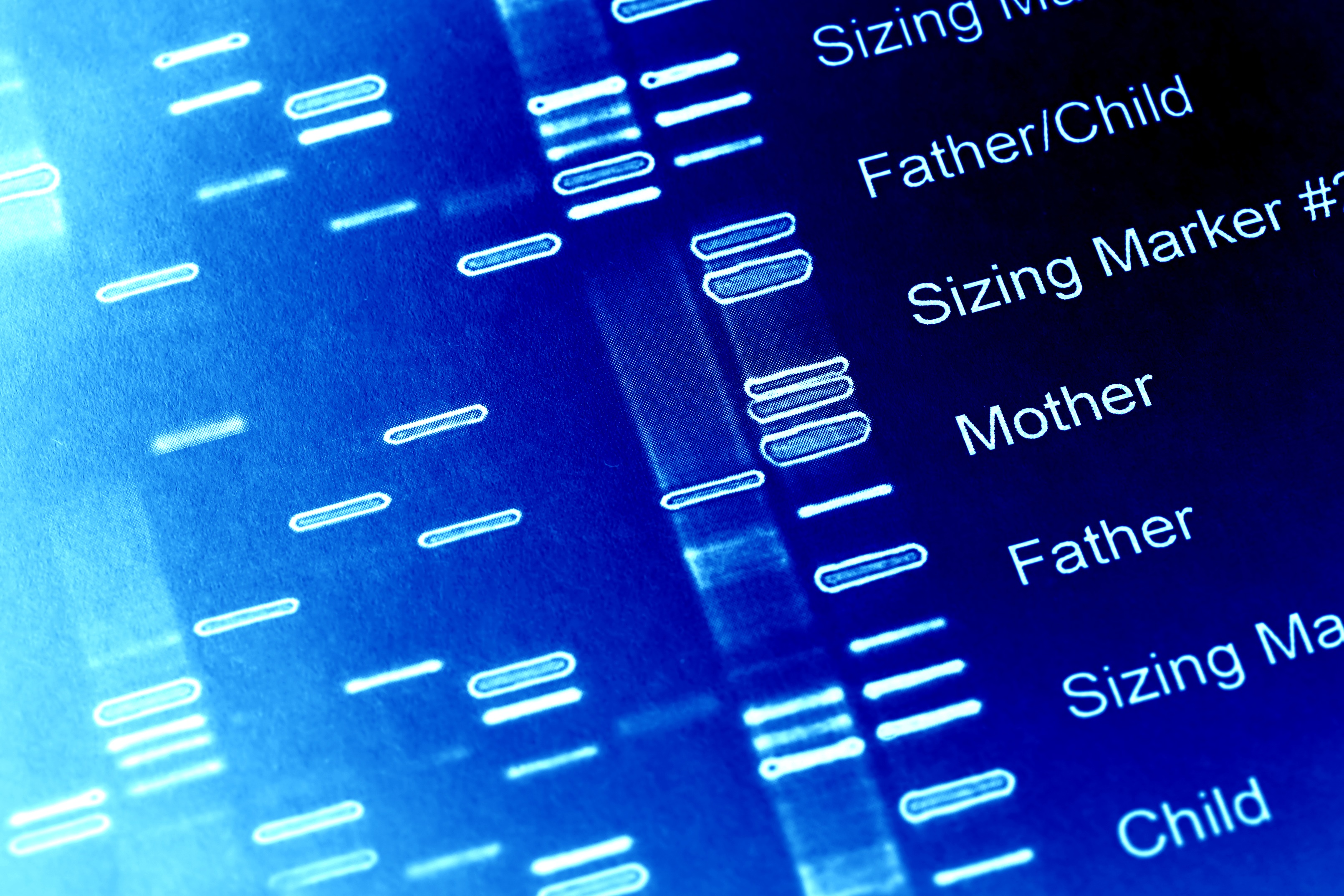
DNA fingerprinting – a major breakthrough in crime detection
1985 Scientists find a gene marker for cystic fibrosis on chromosome number 7.
Human growth hormone produced by genetically engineered bacteria is made available for treatment of children with growth problems.
1986 The first monoclonal antibodies are used to help in organ transplants.
Genetically engineered plants are grown outside in field trials for the first time in the USA. The plants are genetically altered tobacco.
1987 A crime suspect is convicted on the evidence of genetic fingerprinting in the UK.
David Page and his colleagues find a single gene on the Y chromosome which seems to control the sequence of events which leads to an embryo developing testes instead of ovaries – in other words, a gene for maleness.
The first outdoor tests on a genetically engineered bacterium are allowed. It inhibits frost formation on plants.
1988 A patent is given for a genetically engineered mouse.
1990 The Human Genome Project is set up, a collaboration between scientists from around 16 countries to work out the whole of the human genetic code.
Human gene therapy is attempted successfully for the first time. A modified virus is used to carry the healthy gene for a particular enzyme into the cells of a woman with a very weak immune system. It gave her a normally functioning system, but only temporarily – the treatment has to be repeated regularly.
Tracey the first transgenic sheep is born. She was produced when human genes were inserted into fertilised sheep embryos at the Roslin Institute. When she was an adult she produced a human protein, alpha antitrypsin, in her milk. This protein was extracted and it was hoped it would help relieve the symptoms of people suffering from cystic fibrosis and emphysema. This later proved unsuccessful because the traces of sheep molecules in the product triggered allergic reactions in the people treated.1992 The first liver ‘xenotransplant’ from one type of animal to another is carried out successfully.
Tests for cystic fibrosis and haemophilia in foetuses developed.
1994 The Flavr Savr tomato becomes the first genetically modified food sold in the UK. The advantages claimed include resistance to bacterial and fungal attach and better taste. Concern is expressed about the marker gene used, which confers resistance to the antibiotics kanamycin and neomycin.
1995 The bacterium Haemophilus influenzae is the first free-living organism in the world to have its entire genome sequenced by Frederick Sanger and his team at Cambridge.
Ian Wilmut clones several lambs from the cells of a 9 day embryo lamb.
1996 Dolly the sheep is born. She was produced by Ian Wilmut and his team at the Roslin Institute near Edinburgh. She had been cloned from an udder cell of an adult sheep and the egg implanted into a completely different sheep.
Polly the sheep born later the same year was the first genetically engineered sheep to be cloned.
The first fungal genome is sequenced - that of Saccharomyces cerevisiae, or baker’s yeast. It was sequenced by the International Collaboration for Yeast Genome Sequencing.
1998 Dolly the sheep gives birth to her own lamb, showing she is capable of normal reproduction.
Dr James Thomson at Wisconsin and John Gearhart in Baltimore both developed a technique for culturing embryonic stem cells which have enormous potential for forming new organs for transplants without problems of rejection.
The first animal genome is sequenced – that of a soil-living, 1mm long nematode worm, Caenorhabditis elegans which is a widely-used laboratory organism. The work was a collaboration between The Genome Institute at Washington University USA and the Wellcome Trust Sanger Institute, Cambridge UK.
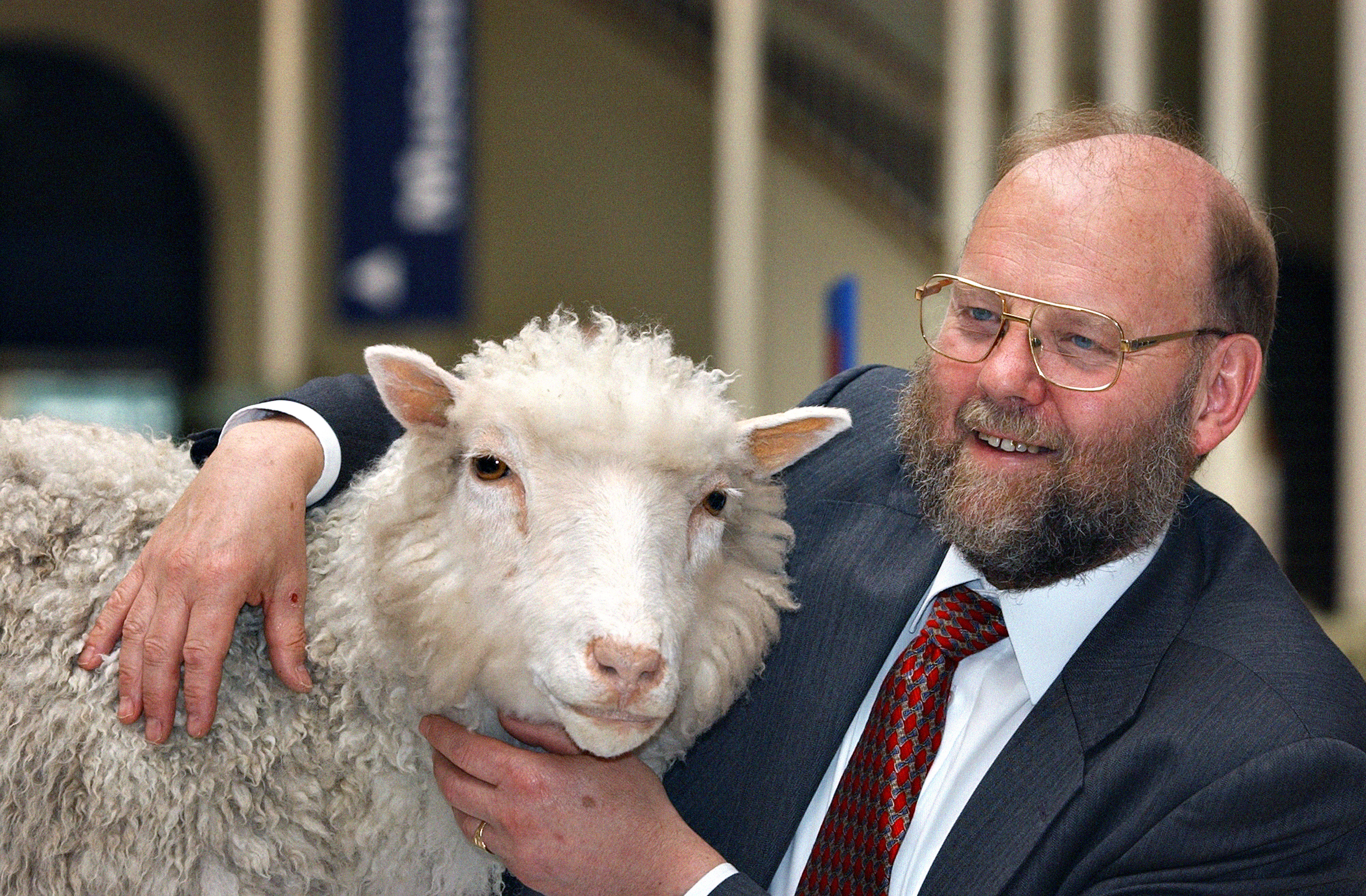
Professor Ian Wilmut with Dolly the sheep – the first mammal cloned from an adult cell
A US firm buys the technology used to clone Dolly in a bid to clone cells from patients to produce new organs for transplanting in therapeutic stem cell cloning.
A prototype GM golden rice, with enhanced beta carotene for vitamin A production, was developed with the aim of reducing the health problems resulting from lack of vitamin A which affect millions of people globally.
2000 Cloned pigs born for the first time, produced by Alan Coleman and his team at PPL.
The first plant genome, Arabidopsis thaliana, is sequenced by teams from the USA, France and Japan.
The first insect genome is sequenced by teams in the USA and Europe. The insect used is the fruit fly Drosophila melanogaster, widely used in genetics experiments.

Golden rice compared to white rice
The first cloned kitten (CC or Carbon Copy) is born.

CC, the first cloned cat, looked very different to her genetically identical mother
2002 Genomes are sequenced thick and fast – in this year alone scientists published the genomes of the mouse Mus musculus (widely used as a model organism in research), the mosquito Anopheles gambiae, which carries malaria, the Japanese pufferfish (Takifugu rubripes), and Oryza sativa or rice, the staple food of millions of people around the world.
2003 Human Genome Project officially completed.
2004 The genome of red jungle fowl, Gallus gallus, is sequenced. It is a close relative of domestic hens and the first egg-laying animal to be sequenced.
The FDA in America approves the first monoclonal antibody for use in cancer therapy along with a DNA microarray test system, clearing the path towards personalised medicine.
2005 The genome of the chimpanzee, Pan troglodyte, is sequenced – the first non-human primate genome to be revealed.
The first cloned dog, Snuppy, was born – an Afghan hound.
2006 A vaccine is developed against human papilloma virus. This virus causes genital warts and is linked to the development of cervical cancer. This was the first time people could be protected against future cancers by a vaccine.
The 3-D structure of HIV (human immunodeficiency virus) which causes AIDS, is worked out.
CC, the first cloned cat, gives birth to four kittens – 3 are healthy, one is stillborn.
2008 The 1000 Genomes Project was set up to find most genetic variants with frequencies of at least 1% in the populations studied. It used the genomes of 1000 people. The success of the project depended on new, faster cheaper technologies for DNA sequencing.
Japanese scientists produce artificial DNA, using synthetic bases within the DNA framework. The artificial molecule was more stable and tougher than naturally occurring DNA.
Snuppy, the first cloned dog, fathers a litter of puppies.
2010 The genome of Xenopus tropicalis, the Western clawed frog, is sequenced. These frogs are often used in the study of early development.
Dr J. Craig Venter and his team develop the first self-replicating, synthetic bacterial cell.
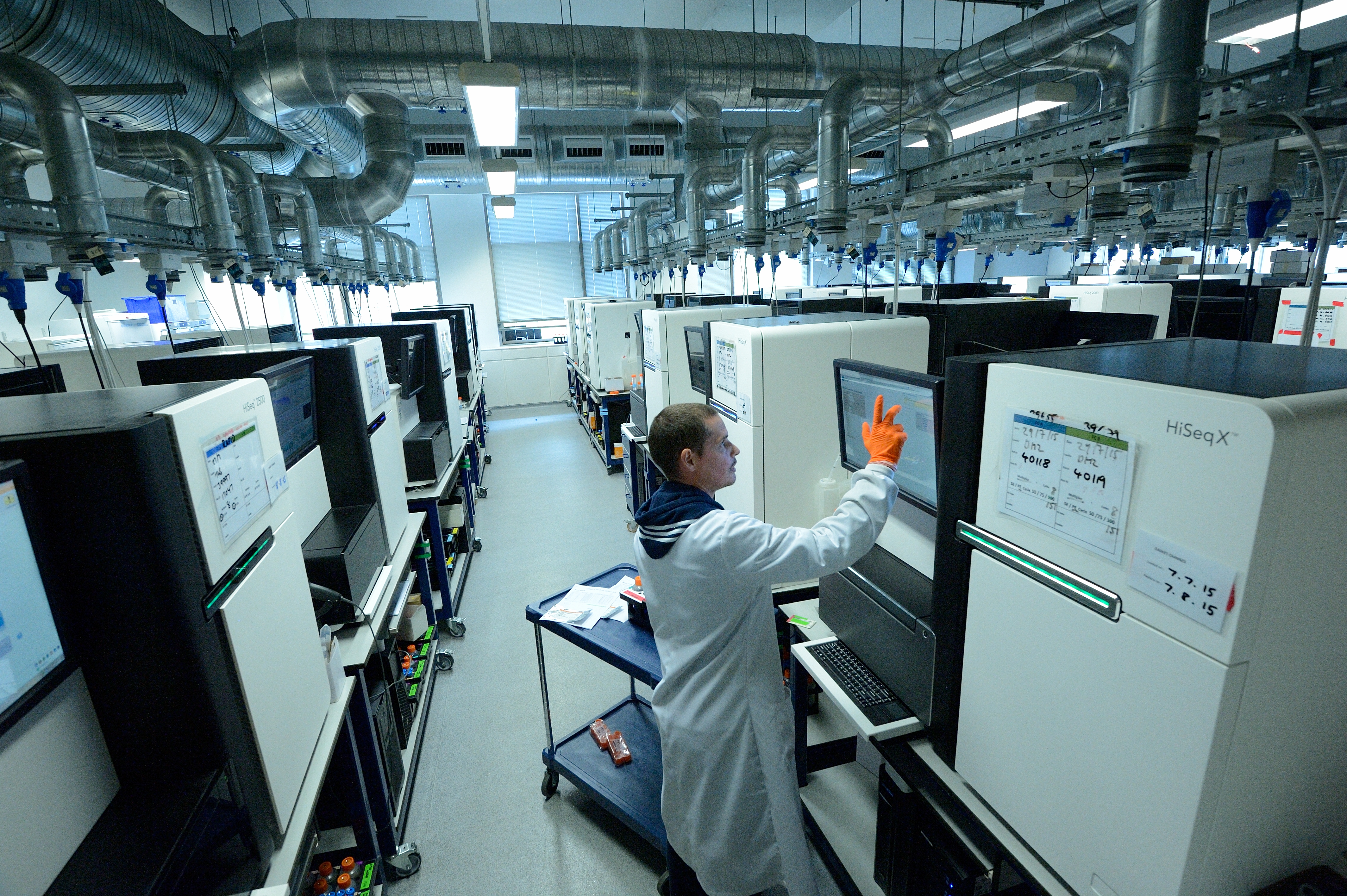
Next-generation sequencing technology makes it feasible to sequence human DNA relatively cheaply in a very short time
2013 The genome of the zebrafish, Danio rerio, was sequenced. These fish are widely used as model organisms in research.
GM drought-resistant maize was planted for the first time in US – with plans to plant it in Africa in 2017.
World's first cultured meat hamburger grown directly from muscle cells. It cost over $300,000 and needed 2 years to produce.2014 Insect-resistant GM aubergines were planted in Bangladesh for the first time.
Mini stomachs – gastric organoids – grown in vitro for use in research into Helicobacter pylori, the bacterium which can cause gastric ulcers and stomach cancer.
Researchers persuaded human stem cells to form functional pancreatic beta cells – the cells which produce insulin and which are destroyed in type 1 diabetes.
18 patients with age-related macular degeneration had their sight partially restored using embryonic stem cells, with no major side effects.
2016 Harvard scientists used a combination of gene therapy and stimulation to restore sight in blinded mice.
Scientists use CRISPR-Cas9 to edit RNA for the first time. This raises the hope of treating genetic diseases such as muscular dystrophy by manipulating the levels of different proteins made.
100,000 Genomes Project in England is involved in recruiting families with rare genetic conditions, and people with a wide range of cancers, and sequencing their genomes.
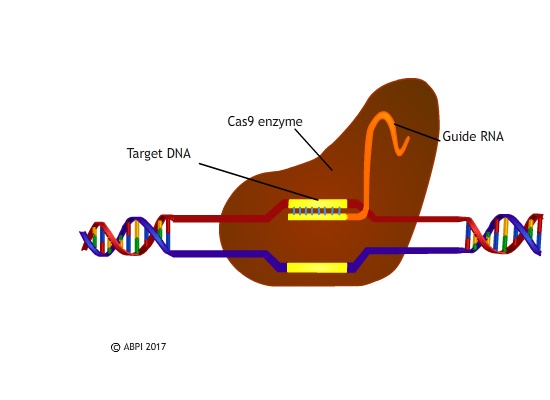
CRISPR-Cas9 – the most effective gene editing tool to date
2017 Scientists report on a boy with sickle cell disease who has been free of all symptoms since his bone marrow was genetically modified (15 months and counting). His modified bone marrow makes normal haemoglobin.
Scientists use genome sequencing to identify tuberculosis in human patients and to select the most appropriate antibiotic.
The first artificial mouse embryos are made, using two types of stem cells and an artificial 3-D structure. They are grown in the laboratory for 14 days, opening the possibility of artificial human embryos which can help us understand the early stages of development and some of the causes of miscarriage.